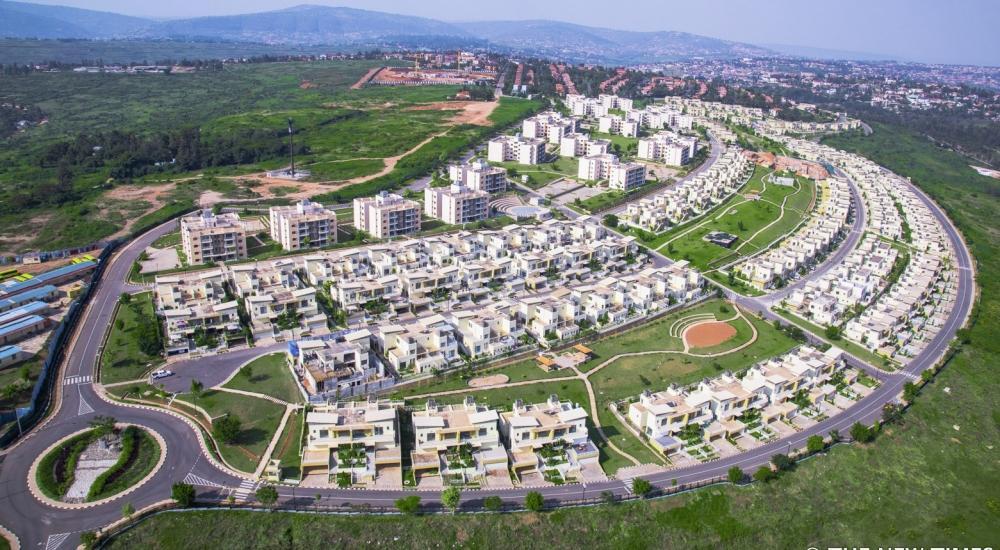Africa-Press – Rwanda. Rwanda’s urbanisation rate is targeted to increase from 35 per cent of the total population in 2024 to 52.7 per cent in 2035, and 70 per cent by 2050, according to the new National Urbanisation Policy.
According to the policy, effective urban management, which includes creating an enabling environment for urban economies to thrive, and for people to experience high-quality living standards, is imperative for the country to achieve its urbanisation target.
The policy highlights that for cities and towns to grow, they must provide jobs and opportunities for their existing populations while also attracting migrants from rural areas.
As cities and towns expand, all urban areas must remain livable, and all residents must benefit from urban services in a sustainable and inclusive manner, the policy shows.
“Cities need to remain resilient, managing critical shocks and stresses posed by climate change, while simultaneously mitigating the negative externalities of unbalanced economic growth on society,” the policy reads in part.
Urbanisation growth
Protais Mpayimana, Urban and Rural Planning Division Manager at the National Land Authority, explained that 15.4 million people equivalent to 70 per cent of the projected 22.1 million population in 2050 will be living in urban areas.
“We used to have 28 urban areas that had to accommodate only 35 per cent of the total population. Following the review, the rapid urbanisation growth will require 101 urban areas, which are classified into five categories,” he noted.
The urban areas include Kigali as the capital city, three satellite cities — Muhanga, Rwamagana, and Nyamata in Bugesera — and eight secondary cities.
The eight secondary cities include Huye, Muhanga, Musanze, Nyagatare, Rubavu, Rusizi, Karongi, Kirehe, and Kayonza.
“Kigali City will have to accommodate 3.8 million people,” he said, adding that the satellite and secondary cities will each accommodate 650,000 population.
To support urbanisation, the country will also develop 16 ‘District Towns’ and 73 ‘Rurban Centres’.
Rurban centres are areas that blend characteristics of both rural and urban environments, marking a transition from predominantly agricultural or low-density zones into more urbanised communities.
“Some district towns include Rulindo, Gakenke, Gatsibo, and Kamonyi, among many others. Each of all 16 District Towns will accommodate a total of 250,000 people by 2050,” Mpayimana explained.
Among the 73 Rurban Centres include Nyagasambu, Muyumbu in Rwamagana, Rurenge, centres around the airport currently under construction, and Karumuna in Bugesera District, as well as Remera in Muhanga, among others.
Teddy Kaberuka, an economic analyst, said: “Living in urban areas will require creating opportunities for jobs that enable dwellers to generate income to get a decent life.”
He observed that developing basic infrastructure such as schools, water, and health facilities will be important towards this transition. “Creating urban areas must also help save land for agriculture to supply such cities.”
Upper-middle-income status
Urbanisation is at the heart of Rwanda’s development strategy, with experts highlighting that having 70 percent of the population living in 101 well-planned urban areas will be instrumental in achieving the country’s long-term economic goals: upper-middle-income status by 2035 and high-income status by 2050.
“Income per person must rise in tandem with urbanisation for Rwanda to transition to an upper-middle-income country,” said economist Kaberuka. “That means creating jobs, boosting productivity, and building cities where people can thrive.”
To support this vision, the Government of Rwanda launched the National Land Use and Development Master Plan (NLUDMP) 2020–2050, a framework that guides spatial planning in line with Vision 2050. A key component of this plan involves the development of detailed land use plans for all 27 districts, including Kigali City.
Progress is already underway.
According to the National Land Authority, land use plans for 14 districts—including Kigali City, Huye, Muhanga, Gisagara, Nyagatare, Gicumbi, Rubavu, Musanze, Kirehe, Rulindo, Nyaruguru, Rwamagana, Gakenke, and Ngoma—have been approved by the Cabinet.
Eight additional plans have been validated at the district level and are currently awaiting Cabinet approval. These include Bugesera, Rusizi, Karongi, Kayonza, Kamonyi, Ruhango, Gatsibo, and Nyamagabe.
The remaining six districts of Nyanza, Nyamasheke, Nyabihu, Rutsiro, Ngororero, and Burera are in the final stages of developing their plans, which are expected to be completed by the end of 2025.
By strategically guiding urban growth, Rwanda aims to unlock economic opportunities, enhance service delivery, and build sustainable, inclusive cities that will power the country’s future.
Urban growth across districts
Each district in Rwanda has developed a unique vision aligned with its local strengths and potential, as part of the broader national development strategy.
For instance, Muhanga aims to become a key hub for mining, logistics, and regional trade. Huye aspires to be recognized as the “Knowledge, Culture, and Agribusiness Hub.” Gisagara envisions itself as a center for agriculture and sports development.
Nyagatare aims to become a hub for vibrant commercial agriculture and a thriving dairy industry.Gicumbi focuses on cross-border trade, agribusiness, and heroic tourism. Rubavu positions itself as a hub for agriculture, lakeshore tourism, and cross-border trade, with a strong emphasis on sustainable and green practices.
Musanze is positioning itself as the Centre of Excellence in Tourism. Rulindo envisions becoming an Agribusiness, Mining, and Stopover Transit Hub. Bugesera aims to be a center for knowledge, trade, sports, and tourism.
These locally driven visions reflect broader ambition to build inclusive, productive, and resilient cities and towns that harness regional strengths while contributing to national economic transformation.
Source: The New Times
For More News And Analysis About Rwanda Follow Africa-Press






